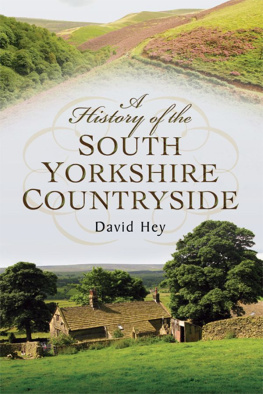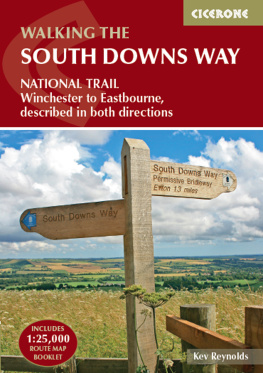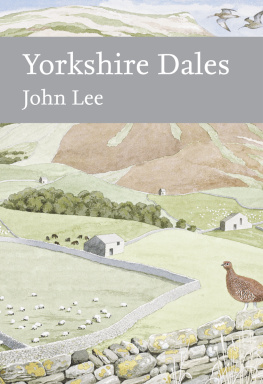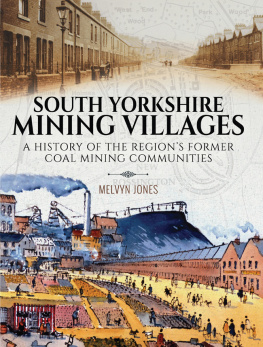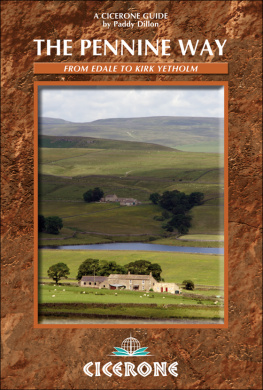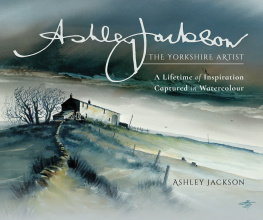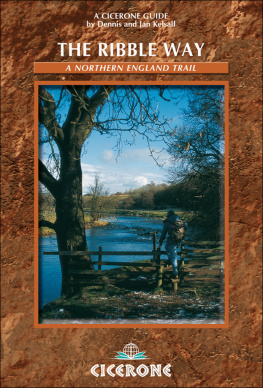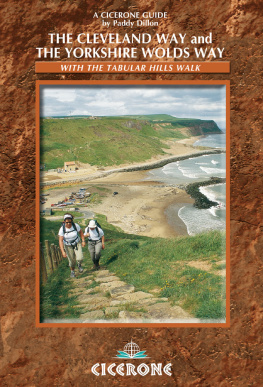
South Yorkshire, as depicted on John Speeds map of the West Riding (1610).
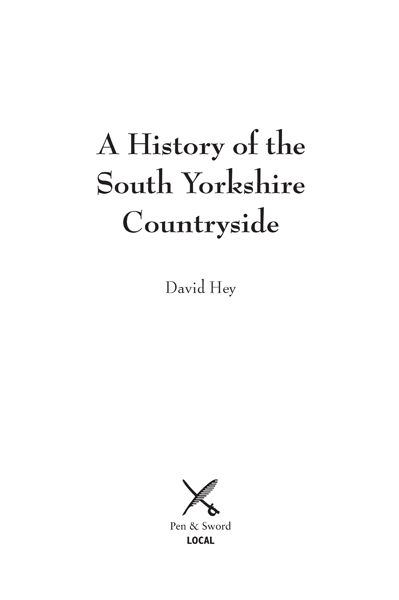
First published in Great Britain in 2015 by
Pen & Sword Local
an imprint of
Pen & Sword Books Ltd
47 Church Street
Barnsley
South Yorkshire
S70 2AS
Copyright David Hey 2015
ISBN 978 1 47383 435 4
eISBN 9781473857360
The right of David Hey to be identified as the Author of this Work has been asserted by him in accordance with the Copyright, Designs and Patents Act 1988.
A CIP catalogue record for this book is available from the British Library
All rights reserved. No part of this book may be reproduced or transmitted in any form or by any means, electronic or mechanical including photocopying, recording or by any information storage and retrieval system, without permission from the Publisher in writing.
Pen & Sword Books Ltd incorporates the imprints of Pen & Sword Archaeology, Atlas, Aviation, Battleground, Discovery, Family History, History, Maritime, Military, Naval, Politics, Railways, Select, Social History, Transport, True Crime, and Claymore Press, Frontline Books, Leo Cooper, Praetorian Press, Remember When, Seaforth Publishing and Wharncliffe.
For a complete list of Pen & Sword titles please contact
PEN & SWORD BOOKS LIMITED
47 Church Street, Barnsley, South Yorkshire, S70 2AS, England
E-mail: enquiries@pen-and-sword.co.uk
Website: www.pen-and-sword.co.uk
Contents
Preface
T hese twenty essays look at how our ancestors shaped the South Yorkshire countryside over the centuries. They deal not only with castles, country houses, churches and monasteries, but also with the houses and barns of peasant farmers, navigable rivers and industrial buildings, intriguing place-names such as Lindrick, and with fields, woods and moorland. Together, they tell the story of how the human landscape was created.
The book draws upon studies that I have made over the last fifty years. Some of my photographs were taken in the late 1960s and 1970s and are now historic documents in their own right. Parts of the text are based on articles that have appeared over the years in journals that are not readily accessible beyond specialist libraries. Occasionally, these articles were written with joint authors. I particularly wish to acknowledge the contributions and warm friendship of John Rodwell, formerly Professor of Plant Ecology at Lancaster University, who wrote two articles with me in the journal, Landscapes , the first on his native township of Wombwell and the second on the Kings Wood in Lindrick. The publications of other friends, many of whom have accompanied me on visits to South Yorkshires numerous historic sites over the years, are acknowledged in the footnotes.
This book, then, is about history on the ground. Documentary research in the archives is an integral part of any historical study, but local and family historians combine the written evidence with what they see all around them, and they welcome the contributions of other specialists, including archaeologists, architects, botanists, geographers, place-name scholars, and aerial photographers.
I would particularly like to thank an old friend, Brian Elliott, for doing the editorial work and Matt Jones at Pen & Sword for overseeing the production process.
David Hey
July 2014
Chapter 1
The Oldest Parish Churches
A s a general rule, the oldest building in a village is the parish church. Indeed, some South Yorkshire churches have architecture or sculpture that is more than a thousand years old. In many of our ancient villages the parish church was even more dominant in the Middle Ages than it is today, for it was usually the only building that was constructed of stone. But, as with many rules, there are exceptions. Todays villages may once have been just small places within large parishes whose church stood a few miles away. In other cases the medieval church has been rebuilt so thoroughly that nothing of the earlier work survives.
The oldest surviving building in South Yorkshire is St Peters church, Conisbrough, the great minster church that served the royal estate of the kingdom of Northumbria near its southern boundary. Conisbrough means the kings stronghold. Its territory stretched as far south as Harthill on the county boundary and as far east as the lowland moors beyond Thorne. The church is much older than the Norman castle across the valley, but as it was extended and enlarged from the twelfth century onwards the ancient part is now hidden from external view. On entering the building through the south door, however, we can see immediately that the outer walls of the nave have large corner stones (quoins) laid in the side-alternate manner that was typical of the Northumbrian method of building. The lofty, rather narrow proportions of the nave are also typical of this early style.
The Normans enlarged the original church by constructing arches in the walls and by creating aisles. The remains of three pre-Conquest windows and a narrow, blocked opening that Peter Ryder suggested led into a side-chapel known as a porticus can be detected above the arches. The lower part of the west tower also dates from before the Norman Conquest. Although we do not know exactly how old the original church is, it was certainly built during the Anglo-Scandinavian era, that long period when the Angles and the Vikings were dominant in the North.
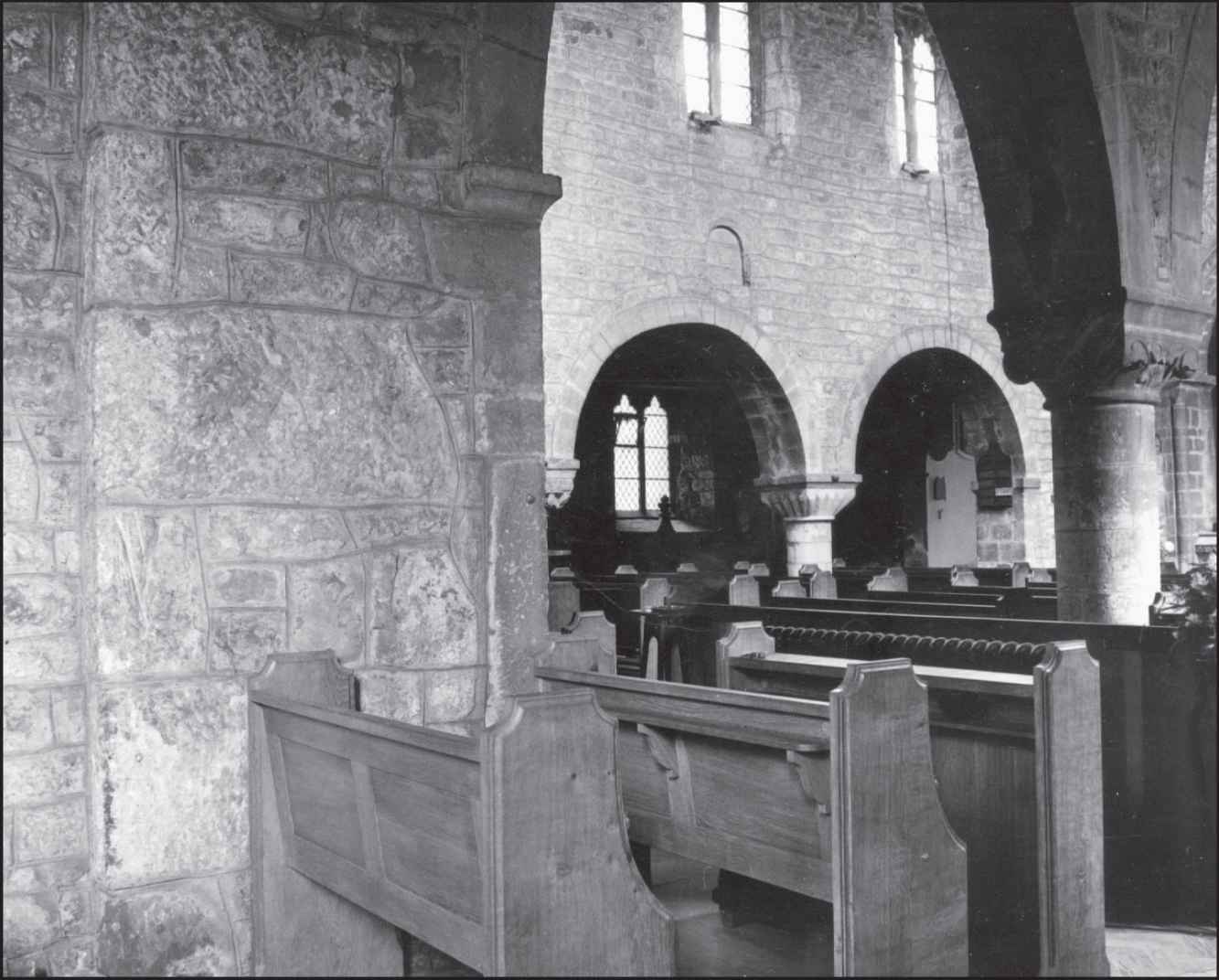
The Normans enlarged the Anglo-Scandinavian church by creating arches through the original external walls in order to create aisles. The side-alternate arrangement of the quoins and the blocked feature above the Norman arches provide evidence of a pre-Conquest building.
Two other early churches at Bolton-upon-Dearne and Laughton-en-le-Morthen were built in a style that is associated with the midland kingdom of Mercia from the ninth to the eleventh centuries. In particular, the quoins of some of the walls were arranged in a distinctive long-and-short manner. At St Andrews church, Bolton such quoins can be seen at the corners of the tall, box-shaped nave and an original round-headed window can be spotted near the centre of the south wall between two blocked arches. These arches once served as doors, with the eastern one perhaps leading into a porticus. A church and a priest were recorded at Bolton in Domesday Book.
Domesday Book also notes that in 1066 Earl Edwin of Mercia owned a hall at Laughton. The only plausible site is that where the Norman lord of the newly created Honour of Tickhill erected a motte-and-bailey castle immediately to the west of All Saints church. It is not clear how much, if any, of the remains pre-date the Norman Conquest. A linear earthwork that is aligned on the castle bailey stretches across the northern part of the churchyard and may have enclosed the church within the halls defences. When All Saints was rebuilt in two stages in the twelfth and fourteenth centuries, the doorway and part of the walls of the former porticus on the north side of the earlier building were left intact, perhaps as a conscious reminder of past importance. The original church was built in Rotherham red sandstone, which stands out vividly against the magnesian limestone of the later building. As the lower part of the chancel walls and the gable-headed piscina inside the chancel are of the same reddish sandstone, it seems likely that they were constructed of re-used material from the early church, which must have been a building of considerable proportions.
Next page
